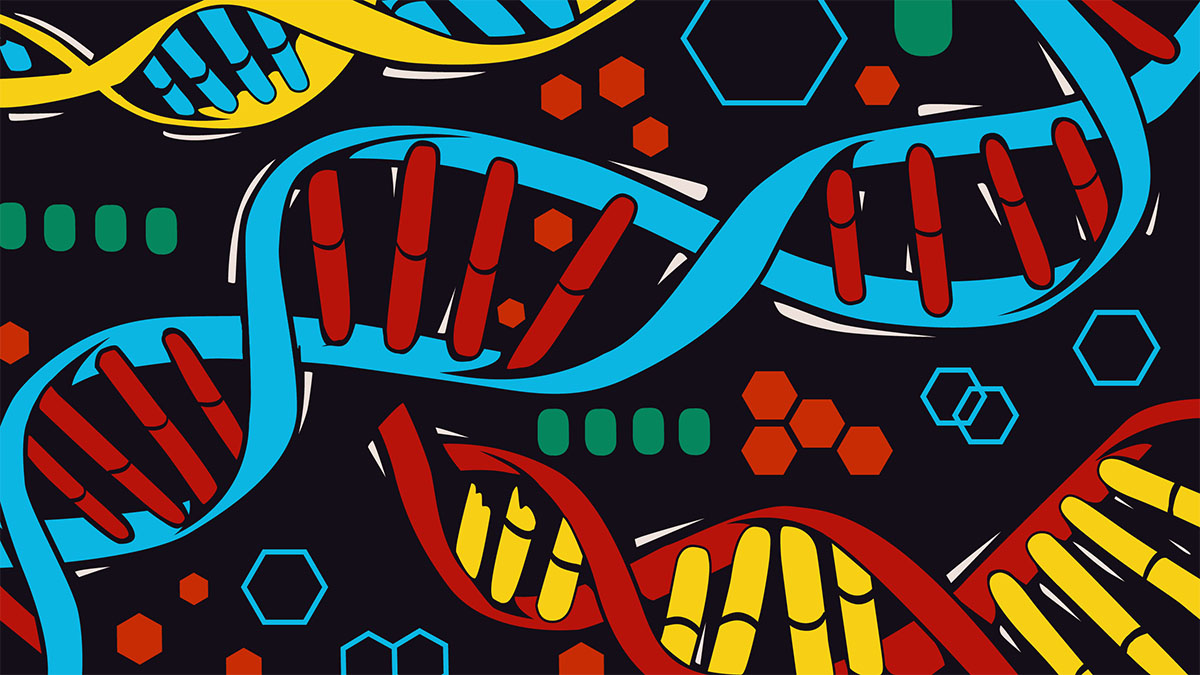the defect that makes us all human

Did you know that all humans suffer from an ancient mutation that left thousands of apes with weak jaws and odd, deformed skulls? In 2003, a surgeon at the University of Pennsylvania looking for possible muscular dystrophy treatments found two missing base pairs in the MYH16 gene which builds jaw muscles in both apes and humans. But it wasn’t all bad. With small, weak jaw muscles, the skull had more time to grow and was able to house a larger brain. Humans, it turns out, became intelligent by a side effect of a genetic snag and science has once again proven creationists wrong.
According to the creationist and ID worldview, a flagellum of a bacteria is way too complex to appear on its own. Human intelligence coming from a genetic defect just two base pairs long? Impossible! Balderdash! Evolutionist cultists losing their minds! It’s not like a single gene can produce a protein that determines how big a jaw muscle can grow and where it will ultimately attach, shaping the brain case. Oh wait, that’s exactly what MYH16 does.
By providing a blueprint to encode the protein myosin (or myosin heavy chain 16 if you want to get specific), it determines how big the muscle is going to be and with two missing base pairs, it just didn’t have enough protein to anchor the jaw muscles to a crest at the top of an ape skull as it should’ve. Instead, the muscle attached itself to the side of the head. In a normal ape, the fusion of the muscle with the crest forced the brain case to seal itself shut in just a few years. Without a huge jaw muscle sealing the skull, hominids would grow much larger heads. It was an evolutionary trade-off. We didn’t have killer jaws anymore, but we had a big new brain and with it, the beginnings of intelligence.
The haughty Victorians who first read Darwin’s theories would probably consider having a weak jaw a defect and the hominids who were shaped by it at a major disadvantage. But with a bigger brain, they could outwit competitors and predators, living long enough to pass on their genes and create a new species of smart primates with weird heads. Same happened with their oddly shaped hips which let them stand upright, see food and predators from farther away and free their hands to carry things and make tools. Ditto for the thinned out body hair and skin which allowed them to better regulate body temperature, giving them better stamina and endurance than their competitors. Several million years of evolutionary trade-offs and changes made our hominid ancestors into modern humans about 60,000 years ago.
Dr. Hansell Stedman’s discovery of this genetic error is a notable reminder that our genes are in constant flux and gene replication isn’t perfect. A snip here, a snag there, an extra base pair down the hall and to the right can trigger a major change in the way an organism will grow and develop. It could give us an extra limb, one less finger on each hand or even make us smarter. And it’s all the more reason to start including genetic toolkits and specifics of gene replication and mutations in science class. With how much we know about genetic processes and their role in evolution, it’s disconcerting that we’re still teaching Punnet squares, stammer about vague “adaptations” as the basics of evolution in science classes and then wonder aloud why so many people scoff at the “vagueness of evolution” and look to creationism for answers…





